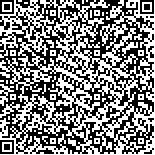| 摘要: |
| [摘要] 目的 评价肩关节镜下改良“Chinese-way技术”在较大-巨大肩袖撕裂修补术中的应用价值。方法 回顾性分析2017-06~2019-07行改良“Chinese-way技术”肩袖修补的19例较大-巨大肩袖撕裂患者的临床资料。术中对肩袖Footprint新鲜化并止点内移,将肱二头肌长头腱从结节间沟松解后,实施肱二头肌长头腱肌腱向后外不切断改良转位移植,然后对肩袖裂口行Suture-Bridge修补术。于术后6周及2、3、6、12、18、24个月随访记录患者疼痛视觉模拟量表(VAS)评分、加州大学洛杉矶分校(UCLA)评分、Constant-Murley评分及肩关节活动度以评估治疗效果。结果 所有患者获得随访,术前VAS评分为5[4,8]分,Constant-Murley评分为(42.65±6.61)分,UCLA评分为(11.21±3.10)分。术后VAS评分为1[0,2]分,Constant-Murley评分为(78.15±7.25)分,UCLA评分为(31.52±3.64)分,术后与术前比较差异有统计学意义(P<0.01)。术前前屈上举平均为62.7°,体侧外旋平均为12.2°,内旋后伸基本达到L4水平,前屈抗阻肌力平均为健侧的11.4%;术后前屈上举平均为154.6°,体侧外旋平均为32.3°,内旋后伸基本达到T12水平,前屈抗阻肌力平均为健侧的64.0%。结论 利用肩关节镜下改良“Chinese-way技术”修补较大-巨大肩袖撕裂,在2年随访中可获得较为满意的临床治疗效果,且具有技术门槛低、简便易行的优点,但仍需要进一步进行前瞻性、大样本和多中心研究对该技术的长期疗效进行验证。 |
| 关键词: 肩袖撕裂 肩关节镜 改良“Chinese-way技术” |
| DOI:10.3969/j.issn.1674-3806.2020.06.02 |
| 分类号:R 68 |
| 基金项目: |
|
| Evaluation of application value of the modified ‘Chinese-way technique’ under shoulder arthroscopy in repair of large to massive rotator cuff tears |
|
LI Bai-chuan, SUN Ke, MO Bing-feng, et al.
|
|
Department of Orthopedics, the People′s Hospital of Guangxi Zhuang Autonomous Region, Nanning 530021, China
|
| Abstract: |
| [Abstract] Objective To evaluate the application value of the modified ‘Chinese-way technique’ under shoulder arthroscopy in repair of large to massive rotator cuff tears. Methods The clinical data of 19 patients with large to massive rotator cuff tears who underwent the modified ‘Chinese-way technique’ under shoulder arthroscopy in repair of rotator cuff tears were retrospectively analyzed from June 2017 to July 2019. During the surgery, the rotator cuff Footprint was freshly decorticated on the surface and the rotator insertions was moved 4~5 mm inward. The intertubercular groove(bicipital sulcus) was released, and the long head tendon of biceps brachii(LHBT) was transferred outward the greater tubercle and implantated(LHBT without cutting off). After that, the rotator cuff tear was repaired by Suture-Bridge Fixation. The Visual Analogue Scale(VAS) scores, University of California at Los Angeles(UCLA) scores, Constant-Murley scores and range of motion(ROM) of shoulder were analyzed and compared 6 weeks, 2 months, 3 months, 6 months, 12 months, 18 months and 24 months after the surgery. Results All the patients were followed up. Before the surgery, the VAS scores were 5[4, 8]points; the Constant-Murley scores were (42.65±6.61)points and the UCLA scores were (11.21±3.10)points. After the surgery,the VAS scores were 1[0, 2]points; the Constant-Murley scores were (78.15±7.25)points and the UCLA scores were (31.52±3.64)points. The differences between postoperative results and preoperative results were statistically significant(P<0.01). Before the surgery, the average angle of flexion and upward lifting was 62.7 °; the average angle of lateral external rotation was 12.2°; the level of internal rotation and backward extension basically reached level L4 and the muscle strength of forward flexion resistance was 11.4% of the healthy side. After the surgery, the average angle of flexion and upward lifting was 154.6°; the average angle of lateral external rotation was 32.3°; the level of internal rotation and backward extension basically reached level T12 and the muscle strength of forward flexion resistance was 64.0% of the healthy side. Conclusion Using the modified ‘Chinese-way technique’ under shoulder arthroscopy to repair large to massive rotator cuff tears can obtain a satisfactory clinical treatment effect within 2 years of a follow-up. This method has the characteristics of low threshold, simple and easy operation, but it still needs further prospective, large-sample, multi-center and long-term follow-up studies to verify the long-term effectiveness of the technique. |
| Key words: Rotator cuff tear Shoulder arthroscopy The modified ‘Chinese-way technique’ |

